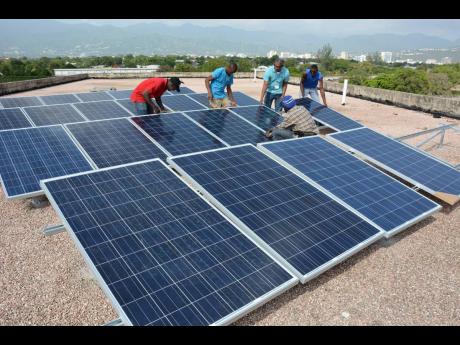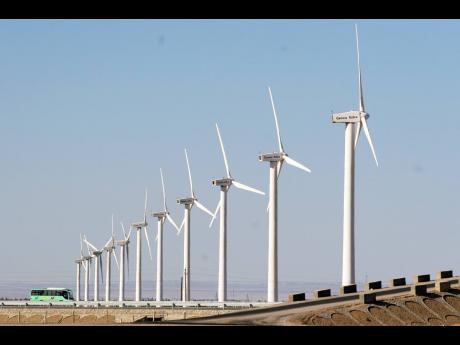Nobel laureate bats for 100% renewables for Jamaica
NOBEL LAUREATE Professor Anthony Chen is championing what to some may appear a radical energy proposition for Jamaica: the pursuit of 100 per cent renewables, including solar and wind, by 2055.
The physicist insists that this is the only way to go if the climate-change train – loaded with temperature increases, sea-level rise and extreme weather events, together with the associated loss of lives and livelihoods – is to be derailed.
This is given the requirement for aggressively scaled-up actions to realise net zero carbon dioxide emissions by 2055 if the world is to have any chance of limiting average global temperature to 1.5 degrees Celsius.
“The good news is that it is now possible to replace fossil fuel by solar and wind, both economically and technically, at least in the case of electricity generation,” said Chen, who was among the Intergovernmental Panel on Climate Change (IPCC) researchers awarded the Nobel Peace Prize for their work in 2007.
He was speaking at the recent University of the Commonwealth Caribbean’s third academic research conference, held under the theme Developing Innovation, Entrepreneurship and Technology for Global Competitiveness.
Renewable energy (RE) sources have long been advanced as a viable and preferred alternative to energy produced from fossil fuels, such as coal, oil, and gas, that produce significant carbon dioxide emissions, which now present a survivability challenge for Caribbean islands and other vulnerable countries globally.
IPCC STUDY
The IPCC’s 2011 Special Report on RE Sources and Climate Change Mitigation, for example, notes the place of renewables in the effort to reduce greenhouse gas emissions and in sustainable development.
“As well as having a large potential to mitigate climate change, RE can provide wider benefits. RE may, if implemented properly, contribute to social and economic development, energy access, a secure energy supply, and reducing negative impacts on the environment and health,” the report said.
It also noted that RE technologies were at varying stages of development.
“Though a growing number of RE technologies are technically mature and are being deployed at significant scale, others are in an earlier phase of technical maturity and commercial deployment or fill specialised niche markets,” the report noted.
“The energy output of RE technologies can be variable and, to some degree, unpredictable over differing time scales (from minutes to years); variable but predictable, constant, or controllable,” it said further.
According to Chen, significant progress has been made over the years, with the result that it is possible for Jamaica to take the leap – as supported by findings from a study done by the University of the West Indies (UWI) in association with Aston Stephens, a former manager at Jamaica Public Service and now Office of Utilities Regulation consultant.
ENERGY STORAGE
“We have the technology to replace fossil fuel as a source of energy by RE such as solar, wind, and hydro, but especially solar and wind. We already have wind at Wigton and solar at Content and Paradise,” the professor said.
“How do you deal with the technical problem of the sun not shining and the wind not blowing? You need to store energy in a form that is quickly and easily retrievable during these times, especially when the sun is down at nights. We have the technology to do this,” he added.
“Besides installation cost, the major cost for running a fossil fuel plant is the cost of fuel. Besides installation cost, the major cost of a solar farm would be the cost of batteries to provide grid stability. The cost of installation in Jamaica is very roughly the same for a fossil fuel plant as for a solar plant,” he explained.
“So if the cost of batteries is less than the cost of fossil fuel, we can economically go with solar plus batteries, rather than a gas plant for which you have to purchase fuel,” Chen added.
In a scenario where as an alternative to the conventional fossil fuel plants currently used, there were plants that were run only on solar and wind, he said, one could also anticipate benefits.
“Keeping in mind that wind blows in the nights, as well as in the day, we can imagine an ideal situation where we only need to back up intermittences one third of the time,” the physicist said.
According to Chen, based on the UWI-Stephens study that has been submitted for publication, “in the next few decades (up to 2055), as prices of batteries fall, we can add more renewables up to 100%, provided of course that a battery energy storage system is added for grid stability”.


